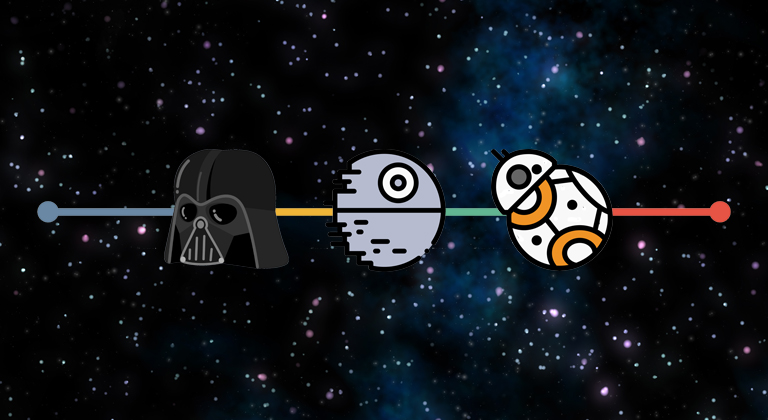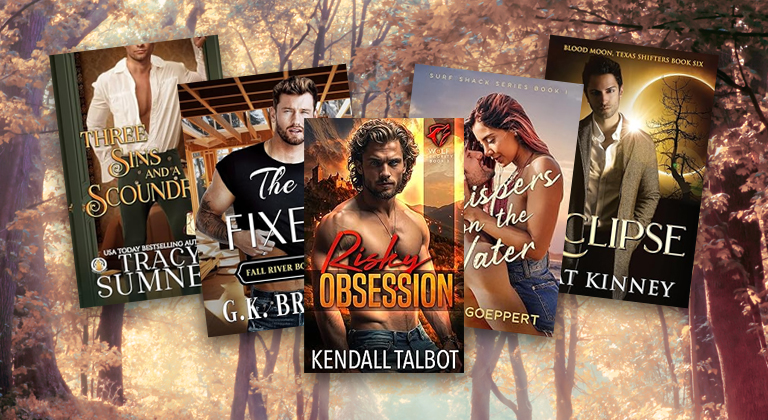Balancing Action and Character Development
Balancing action with character development is an art form that can make or break a novel. Too much focus on action can lead to flat and underdeveloped characters, making it difficult for your audience to connect with the story. To truly elevate your storytelling, it’s essential to balance thrilling sequences with effective characterization techniques.
In today’s blog, Ginger delves into various strategies for achieving this balance by examining a variety of popular movie and literature examples. From understanding the power of pacing to using action scenes to reveal character traits, his advice can help you harmonize high-octane adventures with introspective emotional journeys, ensuring your stories resonate more powerfully with readers.
Recently, I went to see Guy Ritchie’s The Ministry of Ungentlemanly Warfare. It was a terrific, fast-paced movie that delivered on the action and didn’t take itself too seriously – but as I was watching it, I also appreciated all the slower moments in this World War II heist movie. These were the scenes that allowed us to discover more about the characters, ramp up the tension, and deliver some of the most thrilling moments in a movie despite them not involving explosions or Sten guns.
And that’s an art in storytelling – especially when you tell stories that involve a lot of action. The really great tales of our time are overflowing with blistering action sequences, but also allow a viewer or reader to recover their breath with slower-paced scenes. As self-published authors, there’s a lot we can learn from really good examples of this kind of balance.
I mean, of course we strive to create captivating stories that keep readers turning pages – but we should also try to achieve a balance between those heart-stopping action sequences and quieter moments that flesh out our characters and let the reader explore our fictional world.
After all, a constant barrage of action will leave readers breathless and emotionally detached, and neglecting that all-important character development will make a story packed with even the most thrilling scenes feel hollow and disconnected.
The key lies in action and characterization working in tandem to elevate your narrative. In this article, I’m going to explore some successful strategies for effectively interspersing action and dialogue – drawing inspiration from successful authors who’ve achieved this balance in their own novels.
Understanding the Power of Pacing
The Ministry of Ungentlemanly Warfare is a fictional story based loosely (very, very loosely) on real events. As a result, one of the characters in the film is Ian Fleming, who would later go on to write the James Bond books.
When thinking about pacing and the balance between action sequences and quieter moments, two good examples are back-to-back James Bond movies. In 2006, Daniel Craig became the new James Bond in Casino Royale, which was a fantastic movie that balanced an utterly non-stop first half with a quieter, more cerebral second half (interspersed with occasional moments of extreme action.) The movie was a triumph, and is celebrated by many as one of the top three James Bond movies of all time.
Two years later, James Bond returned in Quantum of Solace, which was a perfect example of getting the balance wrong. The movie was a non-stop thrill-ride all the way through, but the frenetic pacing made it difficult to actually keep track of what the story was! Together, the two movies serve as a great example of how the same elements (even the same actor playing the same character) don’t guarantee a movie that resonates the same with the audience.
To understand what I mean, take the thrilling car chase that opens Quantum of Solace. The engine roars, tires screech, and adrenaline surges throughout the opening narrative. This is pure action, a rapid sequence of events that keeps the audience on the edge of their seat – literally!
However, much of the rest of the story was also structured this way, and as a result I’d argue it lacks depth and emotional resonance. Just like a skilled musician uses varying tempos to convey different moods, storytellers should use scenes with different pacing to create a more captivating narrative journey.
It was the quieter moments of Casino Royale, filled with dialogue, romance, and character introspection, which worked so effectively as a counterpoint to the opening action sequences. Scenes like Bond and Vesper eating dinner in a train, or sipping a glass of wine as they surveilled their enemy, allowed us to connect with these characters on a deeper level. We understood their motivations, became invested in their love story, and experienced the emotional impact of the tragic events that would later unfold. This emotional connection is crucial for the audience to truly invest in the story’s outcome; and it’s why Casino Royale is one of the “best” James Bond movies and Quantum of Solace is often ranked as the worst.
Building Tension Before the Explosion
Let’s move from the silver screen to the written word. Think about your favorite action scene in a novel you’ve read. My favorite action novels are ones by Ian Fleming, Jack Carr, and Lee Child – and they have a LOT of action!
But was this scene just a flurry of punches and explosions, or did the author build tension beforehand? Chances are, the scene was preceded by a build-up, perhaps a tense conversation that foreshadowed the conflict. This not only prepares the reader for the action but also raises the stakes of the encounter. In Ian Fleming’s On Her Majesty’s Secret Service, for example, Bond plans to use his hefty Rolex as a knuckle-duster, and it’s incredibly satisfying when you read this careful planning pay off in a blistering sucker-punch.
Another example more people will be familiar with comes from J.K. Rowling’s Harry Potter series. Before the final showdown with Lord Voldemort in the final novel, The Deathly Hallows, we witness Harry grappling with his anxieties and fears, even to the point of driving his best friend away. This internal conflict adds weight to the upcoming battle, and ultimately makes Harry’s victory against Voldemort all the more cathartic.
Letting Characters Breathe
Back to Casino Royale and Quantum of Solace again… A quick comparison demonstrates how action can be thrilling, but constant movement can leave characters feeling one-dimensional.
In Quantum of Solace, Bond is constantly on the move – literally moving from one country to another as the film ramps up to the final confrontation with the villainous Mr. Green. The problem is, it leaves his onscreen presence in one of only two settings: Depressed Cynic or Cold-Blooded Killer.
Casino Royale, in contrast, used calmer scenes to reveal Bond’s personality, backstory, and establish his relationships with other characters. Dialogue is a powerful tool here. In that scene I mentioned earlier, in which Bond and British Agent Vesper meet for the first time, we learn more about James Bond than we have in any prior movie. There’s reference to the death of his parents, his feelings of isolation from the aristocratic high society he was reluctantly raised in, and his cynical attitude to romance. That being said, the scene also explored the potential romance between Bond and Vesper through a conversation filled with banter, vulnerability, and heated exchanges.
Scenes like that were entirely missing from Quantum of Solace, which is why it feels like a flatter film.
Another great example of a film franchise that balances action with quieter moments is the Star Wars trilogy. Think of the witty repartee between Han Solo and Leia Organa in The Empire Strikes Back. They’re some of the fans’ favorite moments, even though they don’t involve tie fighters or light sabers. The lighter moments in Star Wars not only provide comic relief after intense action sequences, but also showcase the personalities of characters like Han and Leia – and their budding romance.
Using Action to Reveal Character
I’ve disrespected Quantum of Solace enough, so now it’s time to give the movie some love for what it gets right – and that’s characterization through action.
Action scenes are not just about physical movement. They can also be used to show a character’s inner strength, weaknesses, and decision-making skills. How a character reacts under pressure, their fighting style, or even their hesitation during a critical moment can all be incredibly revealing.
In Quantum of Solace, there’s a scene in which Bond has to bypass some security guards to access an area of the hotel. Instead of beating them up or stunning them, he simply takes a detour at a stairwell, hops over the balustrade, and lands as deftly as a cat on the opposite balcony. The movement is so quick that other hotel guests and even the security guards themselves blink and miss it – showing Bond’s natural agility, but also his keen intellect and versatility.
In Casino Royale, the opening scene of the movie demonstrates more about Bond’s character. When chasing after a terrorist bomb-maker, Bond finds himself hopelessly outclassed. The fugitive is skilled in parkour, and uses the obstacles in an under-construction hotel to gain increasing distance between the less-agile Bond.
However, we are shown Bond’s keen intellect and brute determination in the scenes that follow – in which instead of trying to parkour through a tiny window like the terrorist, Bond simply smashes through the drywall and keeps on running. It was one of the moments that really established: “This isn’t Roger Moore’s Bond!”
I’ve seen some great examples in literature, too. Reading any of the fight scenes in the Jack Reacher books reveals Reacher’s cool demeanor and calculating brain. He plans out each punch before he throws it, winning most of his fights before they’ve even started.
Likewise, consider Katniss Everdeen from Suzanne Collins’ The Hunger Games. Her strategic mind and unwavering determination are demonstrated by the ways in which she outwits her rivals during the games. This action not only propels the plot forward but also defines her character as a strong and resourceful young woman with a keen sense of justice.
Mastering the Art of Description
If you’re going to use action scenes to develop character, think very hard about how you’re going to write it. Instead of just describing the events of the fight, paint a picture with your words that helps relay more than just who-was-punching-who.
Vivid descriptions can elevate both action and dialogue scenes. Instead of simply stating that a character throws a punch, describe the physicality of the movement, the sound of the impact, and the resulting emotional response. The same goes for dialogue. Capture the nuances of speech patterns, body language, and the overall atmosphere of the conversation.
In the Lee Child books, you can practically hear the impact of Jack Reacher’s head on his enemy’s nose as he uses his signature fighting move. It demonstrates his hulking brutality.
In Ian Fleming’s Live and Let Die, the egomaniacal ranting of legendary gangster Mr. Big helps provide not just exposition about the villain’s plan to flood America with heroin, but also demonstrates his violent narcissism, and the huge chip he has on his shoulder.
Similarly, take a look at how George R.R. Martin uses description in his A Song of Ice and Fire series. From the clash of steel in a battle to the subtle facial expressions during a tense negotiation, his descriptions paint a vivid picture that immerses the reader in the action and emotions of the scene. The books are grisly and grim, but written so evocatively that we can’t help become caught up in each of the characters’ morally questionable actions.
Weaving the Tapestry in Literature
Let’s explore some more examples of popular literature that showcase an effective balance between action and characterization. My favorites:
- The Lord of the Rings by J.R.R. Tolkien: Tolkien masterfully interweaves epic battles with introspective moments for his characters. Fellowship meetings and quiet conversations reveal the depths of each character’s personalities and motivations, making their victories and losses all the more impactful.
- The Martian by Andy Weir: While The Martian relies heavily on the protagonist’s struggle for survival, it’s not just a story about action. Weir cleverly uses Log entries to showcase Mark Watney’s humor, resourcefulness, and internal struggles, making him a relatable and endearing character.
- Ready Player One by Ernest Cline: This dystopian adventure is filled with references to pop culture and VR battles. However, Cline takes time to explore Wade Watts’s relationship with his deceased father, adding an emotional layer that grounds the story and makes the stakes feel real.
Experiment and Find Your Rhythm
As self-published authors, we have the freedom to experiment and find the balance that works best for our stories. Here are some final suggestions I have for you:
- Read widely and analyze successful stories. Notice how your favorite authors weave action and dialogue together. Observe how they build tension before an action sequence and use quieter moments to deepen character development.
- Don’t be afraid to revise. The first draft is rarely perfect. Read through your story and identify areas where the pacing feels off-balance. Perhaps a scene needs more build-up before the action explodes, or a character could benefit from a moment of quiet reflection after a stressful event.
- Consider your own writing style. Some authors gravitate towards fast-paced narratives with a lot of action, while others excel at creating introspective characters and more nuanced dialogue. Embrace your strengths and find ways to incorporate the opposing element to add depth to your work.
- Get feedback from beta readers. Ask trusted readers to pay attention to the pacing of your story and provide feedback on whether certain scenes feel rushed or underdeveloped.
The Final Word
Action and dialogue are not mutually exclusive. When used effectively, they both work together to create a truly engaging story. By employing the strategies discussed above and drawing inspiration from successful authors who’ve mastered the balance, you’ll be better positioned to craft a novel that keeps readers on the edge of their seats while leaving them emotionally invested in your characters and their journeys.











